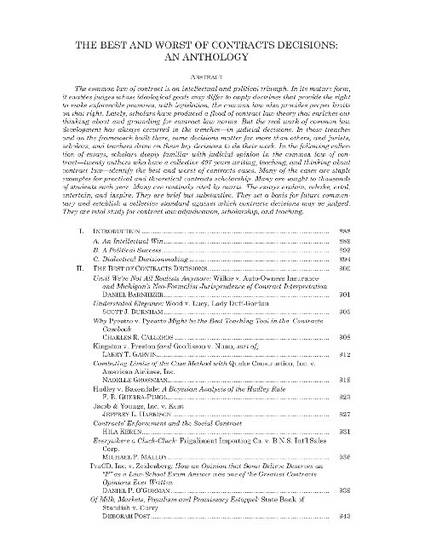
Five hundred years ago, the common law of contract was without substance. It was form-procedure. Plaintiffs picked a form of action, and common law judges made sure someone besides themselves answered all the hard questions; the parties, a jury, or a ritual determined the winner and the remedy. Judges ran a switch on a conflicts-resolution railway. Thomas More, when Chancellor of England (1529-33), urged judges to lay tracks and control the trains. The problem, he said, was that the judges, "by the verdict of the jury[,] cast off all quarrels from themselves." The judges soon assumed greater authority, taking responsibility for the law's substance. The consideration requirement was in place by 1539, and judges afterwards imposed doctrine upon doctrine. Over centuries, they created the common law of contract. That law is now mature, more or less, meaning that judges have tools to fix what they want to fix, and feel free to do so. The law they created-the common law of contract-is a remarkable intellectual and political achievement.
- Common Law and
- Contracts
Available at: http://works.bepress.com/nathan-oman/94/
